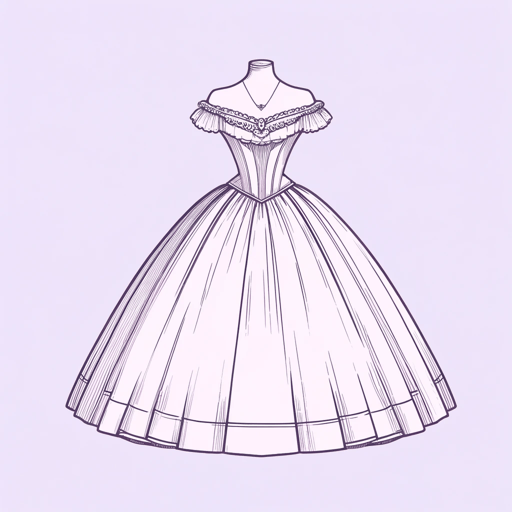48 pages • 1 hour read
Elizabeth GaskellCranford
Fiction | Novel | Adult | Published in 1853A modern alternative to SparkNotes and CliffsNotes, SuperSummary offers high-quality Study Guides with detailed chapter summaries and analysis of major themes, characters, and more.
Summary and Study Guide
Overview
The episodic novel Cranford is perhaps Victorian author Elizabeth Gaskell’s best-known work. Prior to publishing Cranford, Gaskell had published two novels that were highly controversial for their time: her first novel, Mary Barton, a groundbreaking portrayal of social class conflict, and Ruth, a tragic tale about the social stigma of illegitimacy in Victorian society. Cranford, a comedic novel about the seemingly mundane lives of old spinsters in a small rural village, was a stark departure from Gaskell’s prior work. The first two chapters of Cranford appeared as short stories in Household Words, a weekly magazine edited by Charles Dickens. Gaskell didn’t intend to write more stories in the fictional world of Cranford, but with Dickens’s encouragement, an additional series of stories appeared irregularly in Household Words between December 1851 and May 1853. The stories were published in one volume entitled Cranford in June 1853. Gaskell based the fictional town of Cranford on Knutsford in rural Cheshire, the town in which Gaskell grew up, raised by a community of widowed and single female relatives. Cranford became Gaskell’s most famous and most successful work following her death, and contemporary feminist scholars consider it a prominent work of proto-feminist literature from the Victorian era.
This study guide references the 2009 e-book edition published by Floating Press.
Plot Summary
Chapters 1-2 introduce Cranford, a fictional town populated mainly by unmarried and widowed women. The small town of Cranford is a distinct contrast to the more modernized, industrial city of Drumble, where the unnamed narrator, introduced later as Mary Smith, lives with her father, a businessman. The women of Cranford pride themselves on their extreme decorum. They treasure their female-led society, believing that men are too often in the way and do not understand the importance of refinement. When Captain Brown comes to Cranford in Chapter 1, his masculine presence is distasteful to the Cranford women, especially the town’s matriarch, Miss Deborah Jenkyns. Miss Jenkyns has a literary dispute with Captain Brown, which deepens her dislike, although the other Cranford women grow to enjoy his presence. When Captain Brown dies in a railway accident, Miss Jenkyns and the rest of the Cranford women rally around his daughter, Miss Jessie, who is caring for her ailing sister.
Chapters 3-4 bring Miss Jenkyns’s younger sister, Miss Matty Jenkyns, to the forefront. Miss Jenkyns has since passed, and Miss Matty is determined to abide by her sister’s rules even after her death. Miss Matty is kind and timid—a stark contrast to her strict older sister. Mary learns that Miss Matty had a suitor named Mr. Thomas Holbrook who proposed to her 30 or 40 years prior. Miss Matty rejected him, as Miss Jenkyns and their father, the rector, believed Mr. Holbrook was beneath their status. Mary and Miss Matty run into Mr. Holbrook in a shop one day, and he invites them to spend the day at his home. Miss Matty clearly still harbors feelings for her former suitor and is devastated when he dies soon afterwards, though she tries to conceal her grief from Mary.
In Chapters 5-6, Mary and Miss Matty read old letters written by Matty and Deborah’s parents. Mary is surprised to learn from one of the letters that Matty and Deborah have a brother named Peter. Miss Matty tells Mary the sad story of her little brother, who was a mischievous boy in his youth, much to the disapproval of Deborah and their father. One day after Peter dressed up as Deborah as a prank, his father flogged him in front of a crowd of onlookers. Peter then disappeared, causing his mother such grief that she died a year later. The family found out that Peter had gone to Liverpool and joined the Navy. He returned to Cranford as a lieutenant and was last seen boarding a ship to India. Miss Matty believes that he must be dead.
Chapters 7-8 introduce Miss Betty Barker, the daughter of a clerk at Cranford and a one-time maid who has climbed the social ladder due to her business relationship with an aristocrat named Lady Arley. Miss Barker invites Miss Matty and the other Cranford women (including her former employer, Mrs. Jamieson) to tea. Miss Barker is not well-versed in socially acceptable etiquette, so she breaks numerous Cranford “rules” during her social engagement, such as serving too many indulgent desserts. During the visit, Mrs. Jamieson informs the women that her husband’s brother’s widow, Lady Glenmire, is coming to stay with her in Cranford. When Mrs. Jamieson implies that the Cranford women are not noble enough to meet Lady Glenmire, her snobbery deeply offends the women. She soon changes her mind, however, and invites them to a party where she introduces them to Lady Glenmire, who turns out to be very warm and approachable.
Chapter 9 introduces Signor Brunoni, a mysterious conjurer who puts on a magic act in Cranford. In Chapter 10, two robberies take place in Cranford, and some of the ladies suspect that Signor Brunoni may have something to do with the attacks. When Mrs. Forrester holds her annual tea party in celebration of her wedding anniversary, the ladies bravely put aside their fear and venture to Mrs. Forrester’s house. Soon after, Miss Pole and Lady Glenmire are shocked to find that Signor Brunoni is staying at an inn a few miles outside of Cranford with his wife and daughter, Phoebe, after a wagon accident left him injured. Signor Brunoni is in fact an Englishman whose real name is Samuel Brown. The Cranford women take it upon themselves to relocate Samuel to Cranford for immediate medical attention. When Samuel’s wife tells Mary that a mysterious man named “Aga Jenkyns” helped nurse their daughter back to health during their difficult journey from India back to England, Mary wonders if Aga may in fact be the long-lost Peter Jenkyns.
In Chapter 12, the Cranford women are shaken to learn that Lady Glenmire is to marry the town surgeon, Mr. Hoggins. As adamant opponents of marriage, the ladies refuse to congratulate the couple until Mrs. Jamieson returns and sets a precedent as to how they should react to the unpleasant news.
In Chapters 13-16, Miss Matty runs into dire financial troubles when she finds out that her bank will be stopping payments. Miss Pole calls a meeting with Mary and the rest of the Cranford women, and they decide to each contribute some of their personal income to help Miss Matty. Matty also opens up a tea shop in her parlor to earn some small income. A year after Miss Matty opens her shop, she is stunned when a gentleman who walks into her parlor turns out to be her long-lost brother Peter. Peter received a letter from Mary about his sister’s financial situation and immediately sold all of his land and possessions so he could come home to take care of Miss Matty. Peter becomes very popular amongst the Cranford women. He manages to end the feud between Mrs. Jamieson and Lady Glenmire over Lady Glenmire’s marriage. He restores peace to Cranford and makes sure that Miss Matty is well taken care of.
Related Titles
By Elizabeth Gaskell






